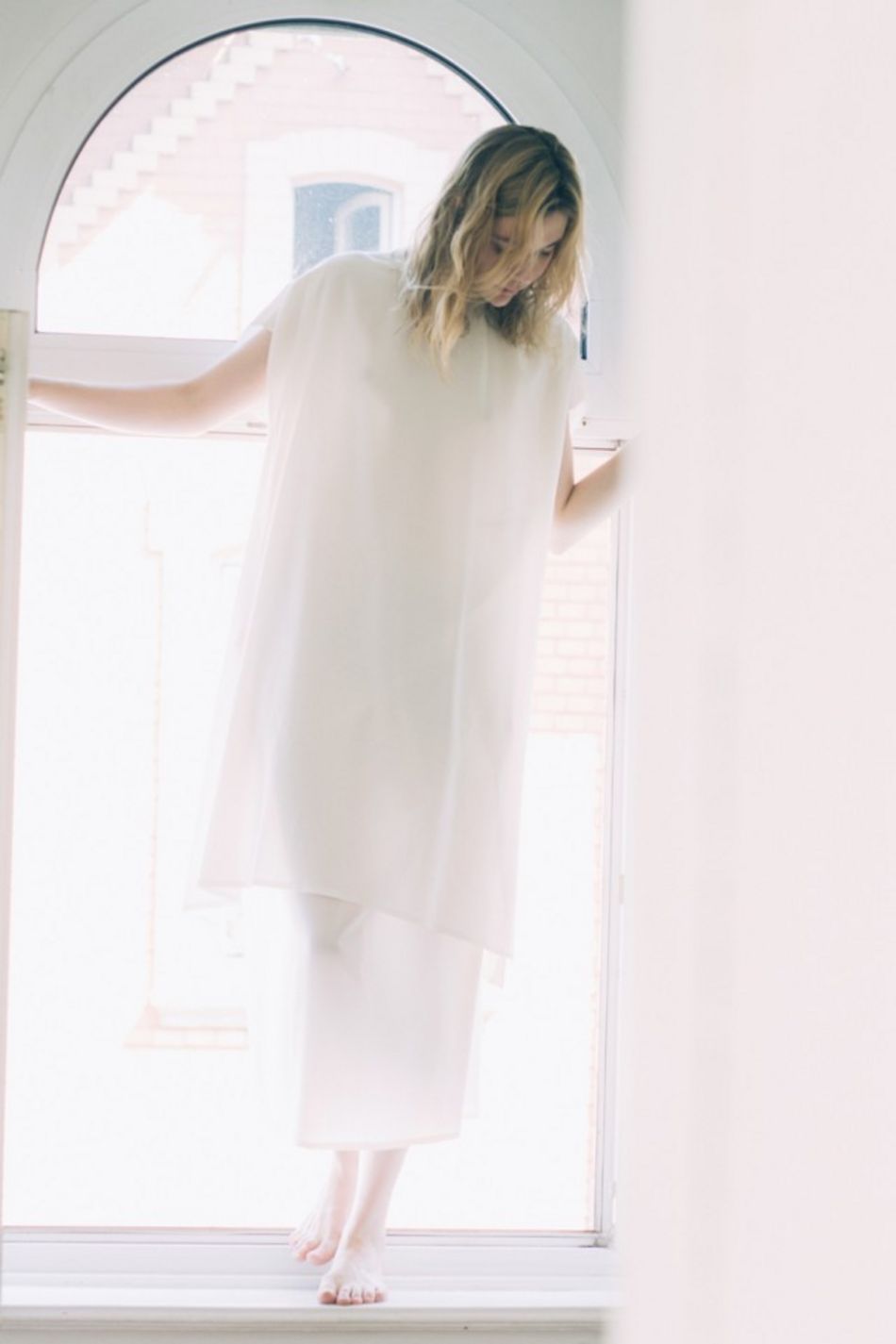
"White Nights" is the title of Fyodor Mikhailovich Dostoyevsky's novel of the same name. But it is less the content itself than much more the title alone that inspired me to create my project.
In general, the expression "White Nights" has several meanings.
For one thing, it describes a natural phenomenon, which is the nighttime hours when the sun sets for only a short time, so that it remains bright at night. These are particularly pronounced in Saint Petersburg, because they attract countless tourists to enjoy the magical atmosphere.
On the other hand, "White Nights" are figuratively referred to as partying nights. This takes place in both French and Italian. In Greece it is a synonym for the siesta. The Romanian language wiederurm uses the "White Night" to express a sleepless night.
I took the latter meaning as a starting point for my research on sleep and insomnia. From a design point of view, my aim was to create simple, wearable and above all comfortable clothing that is based on conventional sleepwear. As most of us know from experience, sleep, which is used for physical rest and relaxation, can also have negative effects. The state often described as "peaceful" is then disturbed by various influences that cause noticeable discomfort. The following factors can play a role in causing sleep problems: External disturbances, such as noise, too bright light, heat or cold, can have just as adverse an effect on sleep as psychological factors, including stress, mental strain or depression. Pain and illnesses of various kinds are organic causes. The feeling of well-being that is associated with sleep is therefore not the only one. Opposites like this can be found everywhere, they are omnipresent and originate from our reality.
If we look at our society today, we can see that it is oriented towards comfort, among other things. Technical progress makes life seemingly easier and more comfortable. However, the more work technology takes away from us and simplifies and accelerates all kinds of processes, the greater the perceived discomfort inside everyone, as they lose some of their connection with the things of the world around them and with nature, thus giving up part of their human capacity to technology. And these pieces are missing, sometimes more sometimes less noticeable. Man himself has built up very efficient industries, which mainly serve to suppress and cover up this deeply human discomfort, but it cannot be completely eradicated. Thus man is permanently confronted with the feeling of being an imperfect being, far away from harmony and balance, and all the more he strives for perfection in one way or another - perhaps without ever being able to achieve it.
I have tried to transfer this subtle uneasiness, or rather the slight disturbance in the supposedly omnipresent harmony to the creative level. The comfortable in the clothes should be associated with a disturbing element. For this purpose, I initially manipulated materials that show disturbing elements such as burn marks, cut-off areas or the installation of pointed wire remains. This is a play on the fact that in the clothing industry the perfect and clean processing of the materials is very important. Ultimately, I have mainly used the element of the cut and the resulting open-edgedness of the fabric in combination with the highest quality clean processing. At the same time, this element appears only subtly in the garments and is not noticed at first glance.
You are leaving the official website of Trier University of Applied Sciences